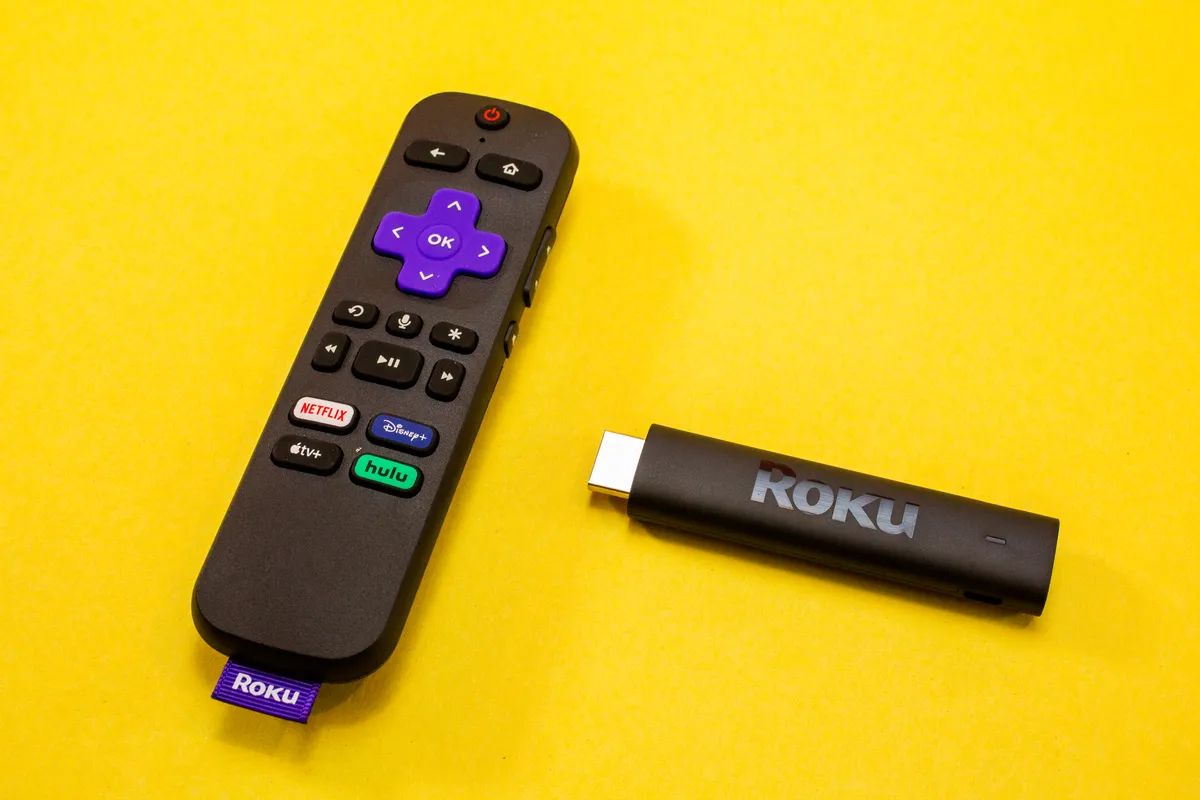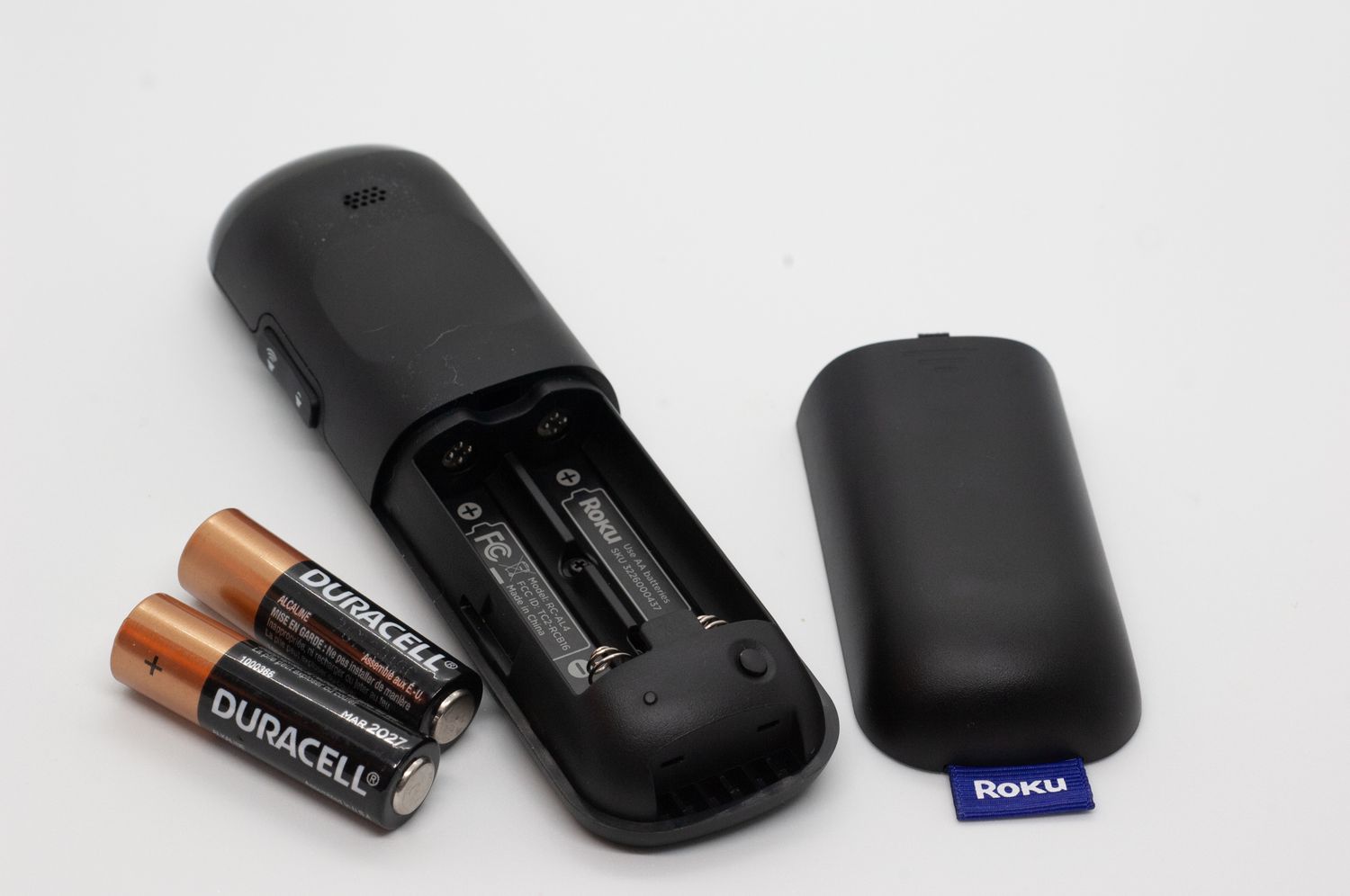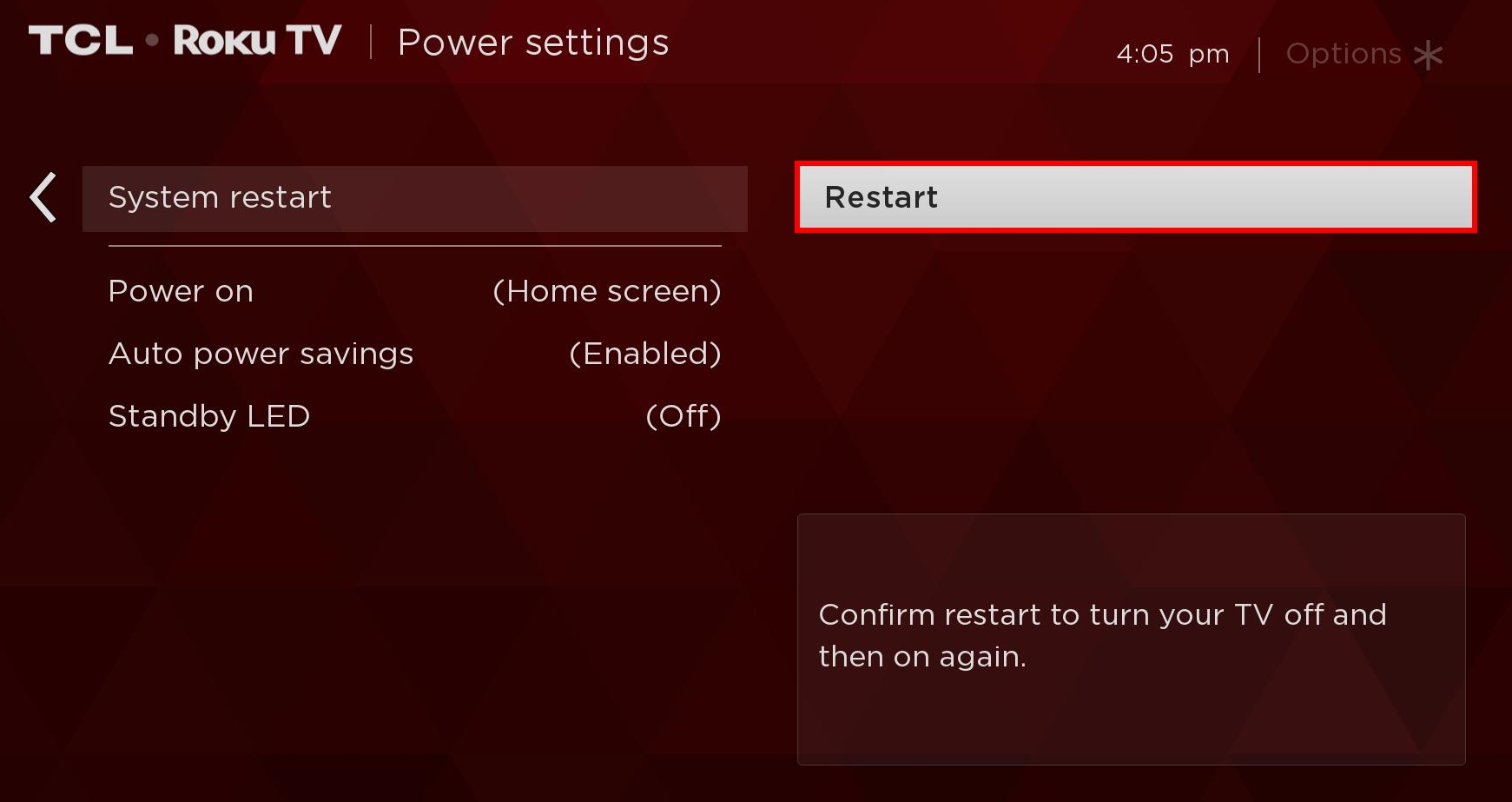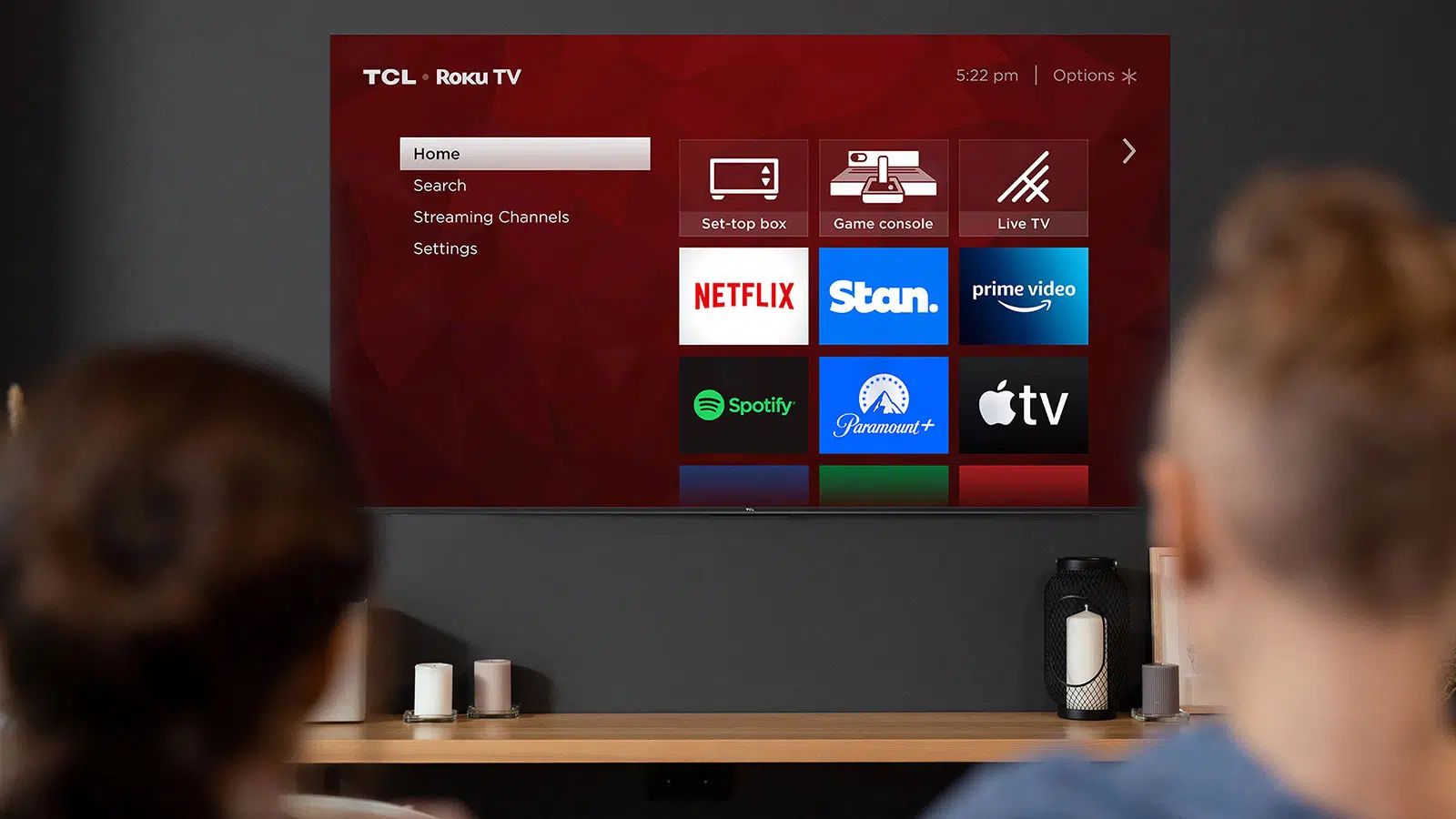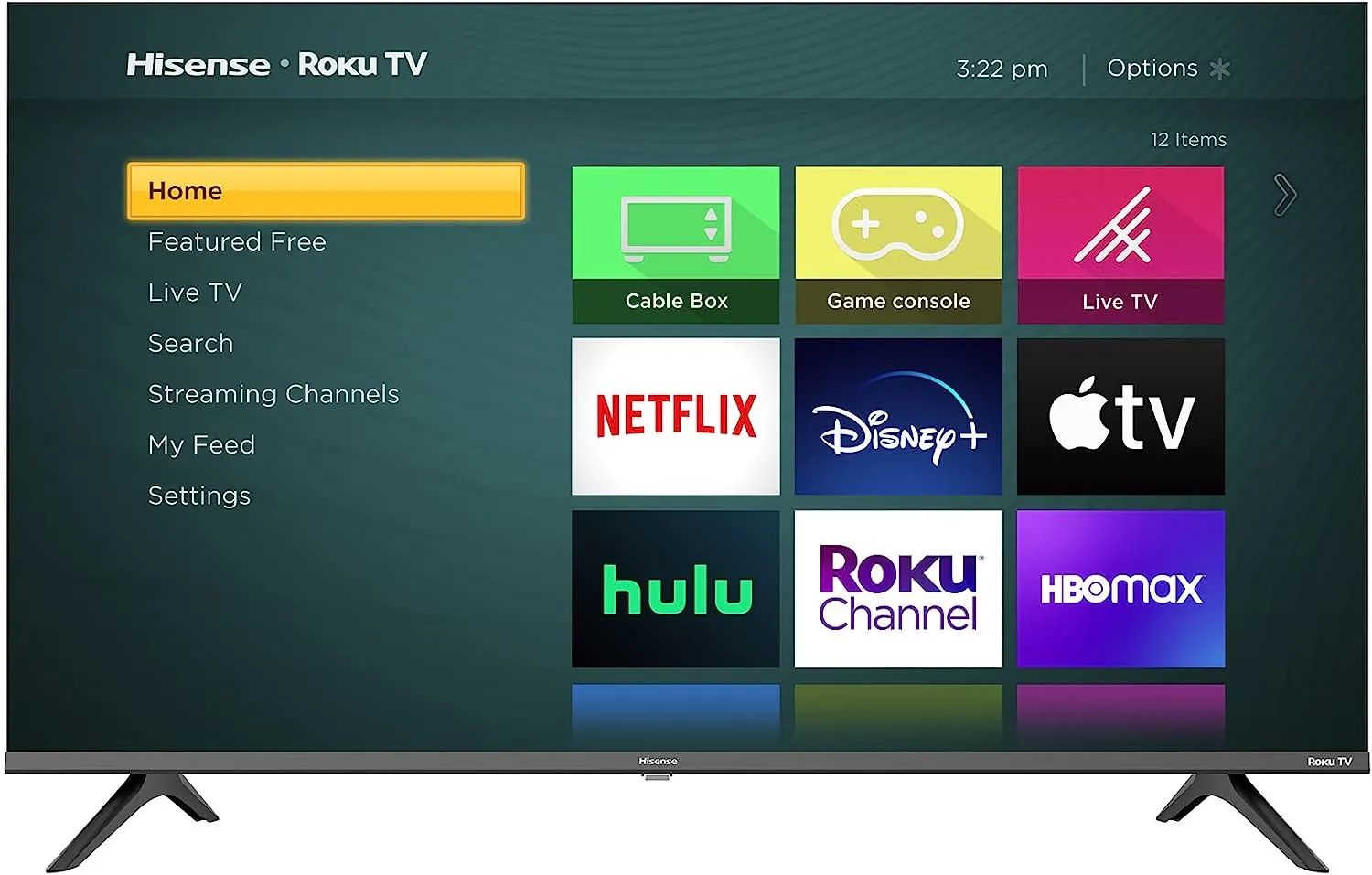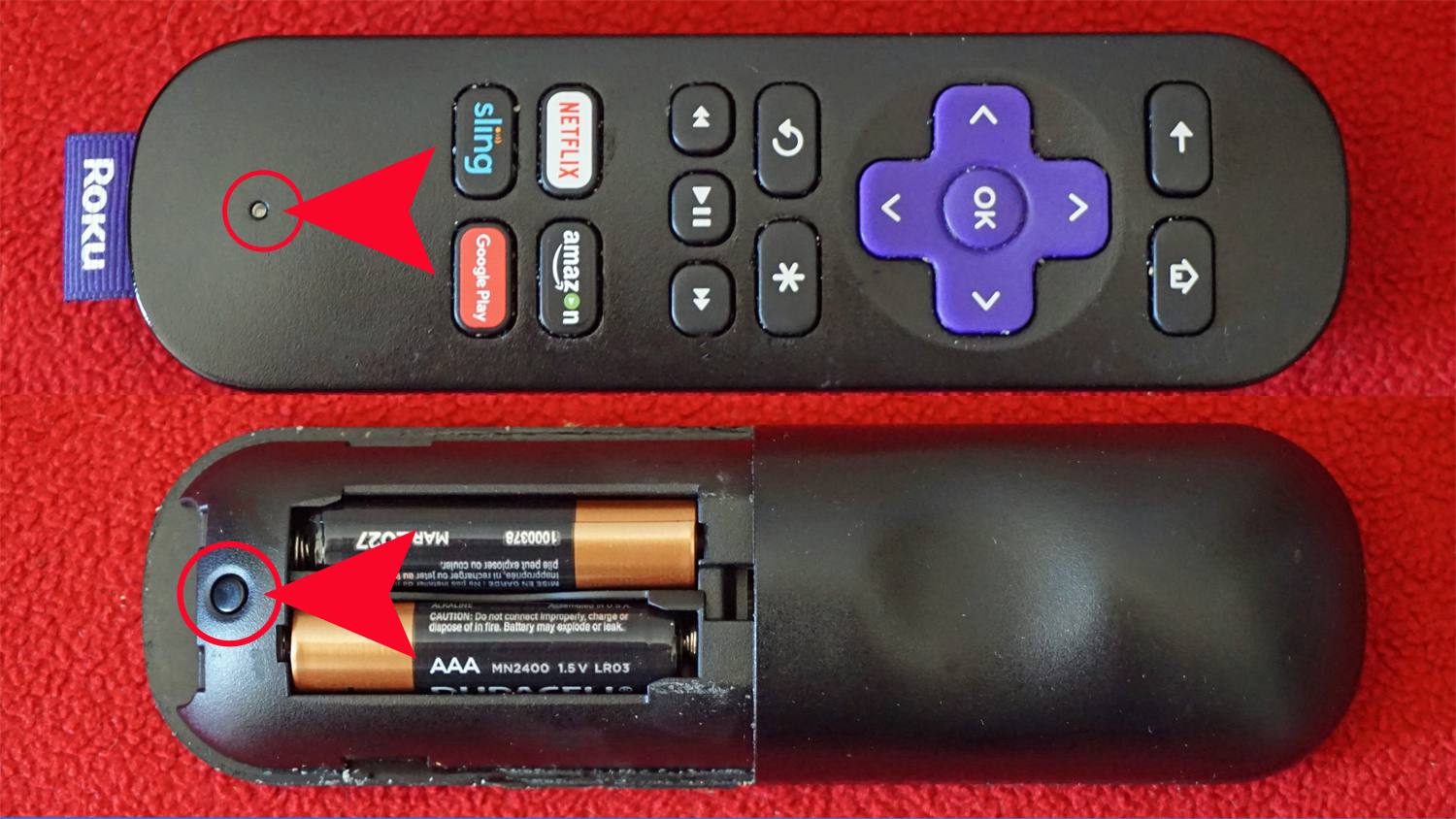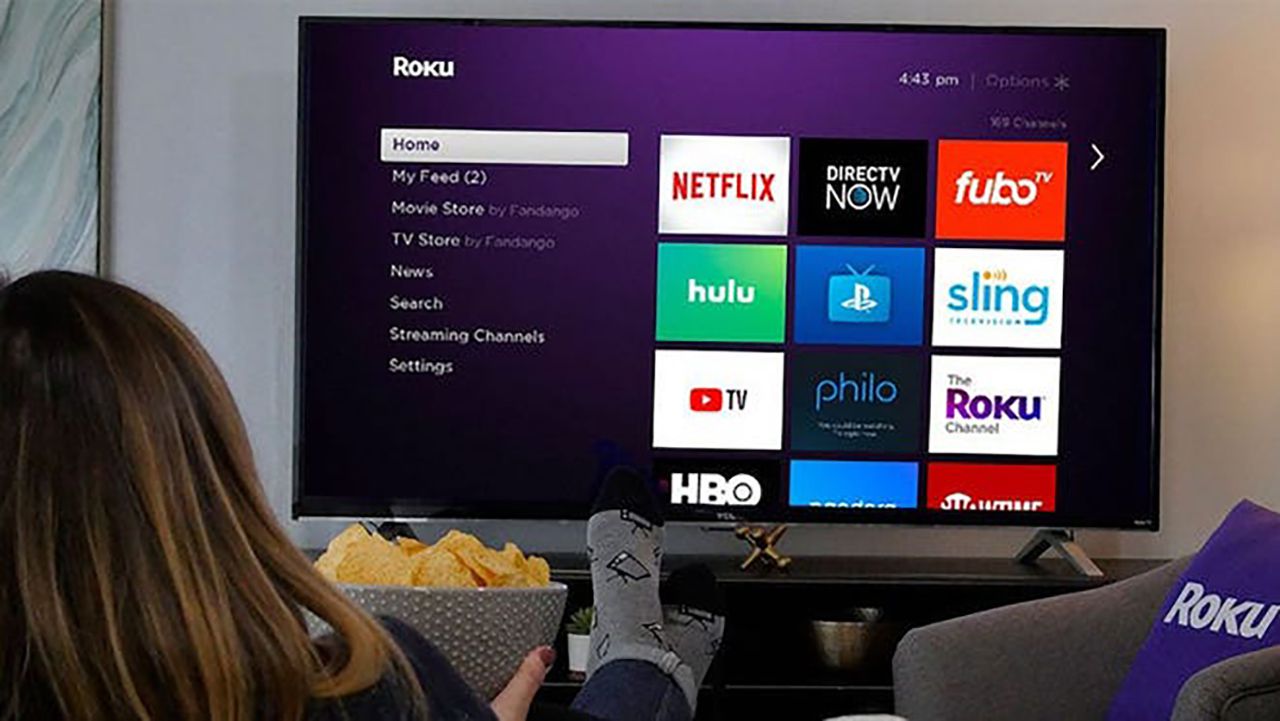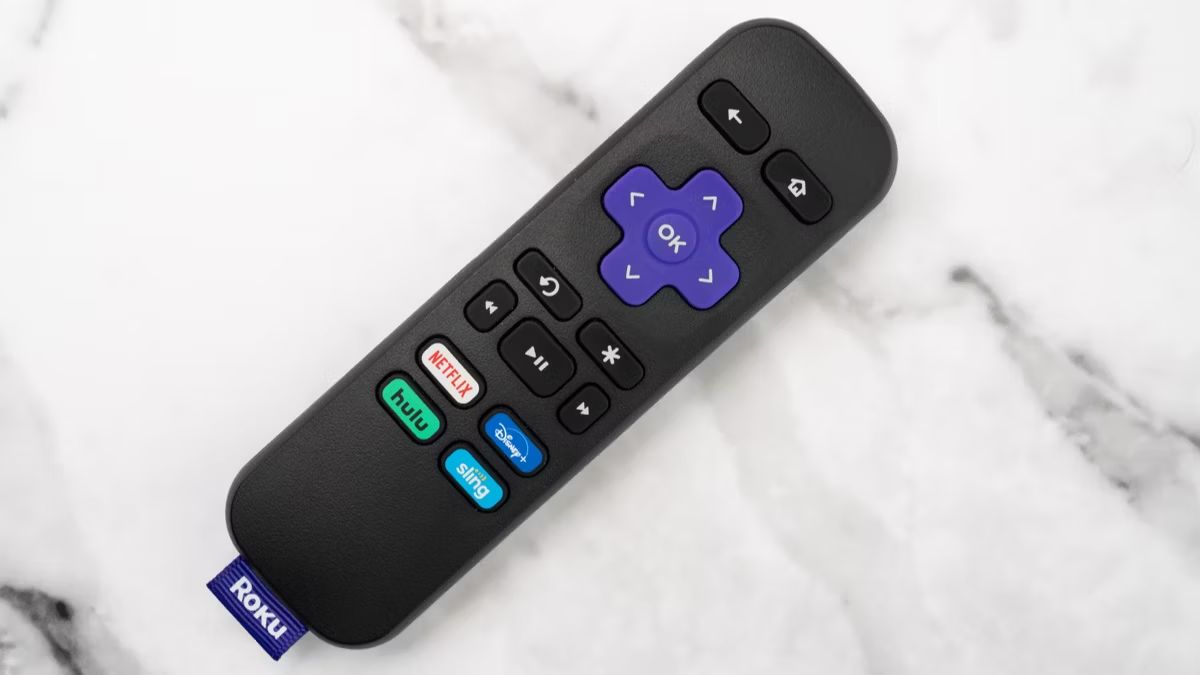Introduction
Welcome to the world of Roku, where you can stream your favorite shows, movies, and games with ease. However, even the best technology can sometimes encounter glitches, leaving you with an unresponsive Roku device. If you’re facing this issue, don’t worry – you’re not alone. Many Roku users have experienced their devices freezing or becoming unresponsive at some point.
There could be several reasons why your Roku is unresponsive. It might be due to a temporary software glitch, a stuck process, or even an overloaded system. The good news is that you can easily resolve most unresponsiveness issues by performing a reset on your Roku device.
In this article, we will guide you through the steps to reset your Roku device, starting with a soft reset, followed by a hard reset if necessary, and finally, a factory reset as a last resort. Before we jump into the different reset methods, it’s important to note that resetting your Roku will not delete your Roku account or any downloaded channels. It simply refreshes the device and clears any temporary glitches.
So, whether your Roku has frozen on a screen, is unresponsive to commands from the remote, or is displaying strange behavior, read on to learn how to reset your Roku device and get it back to its normal functioning state.
Reasons why your Roku may become unresponsive
Before diving into the reset methods, it’s essential to understand why your Roku device might become unresponsive. Here are a few common reasons:
- Temporary software glitch: Just like any other electronic device, your Roku may encounter temporary software issues that can cause it to freeze or become unresponsive. These glitches can occur due to incomplete updates, conflicting software, or other technical factors.
- Stuck process: Sometimes, a specific process or app on your Roku can get stuck, leading to unresponsiveness. This can happen when the device is overloaded with multiple apps running simultaneously or when a specific app encounters an error.
- Overheating: Over time, excessive heat buildup can affect the performance of your Roku device. If your Roku is kept in an area with poor ventilation or is placed on top of other electronic devices that generate heat, it may overheat, resulting in sluggish response or unresponsiveness.
- Network connectivity issues: A stable internet connection is crucial for the proper functioning of your Roku. If your device is experiencing network connectivity issues, it may become unresponsive or display error messages when trying to stream content.
- Hardware malfunction: Although relatively rare, hardware malfunctions can also cause your Roku device to become unresponsive. This could be due to faulty components, a damaged remote, or any other hardware-related issue.
Identifying the cause of the unresponsiveness can help in determining the most appropriate reset method for your Roku device. Now that you understand some of the possible reasons, let’s explore the different reset options to get your Roku back on track.
Steps to reset your Roku device
When your Roku becomes unresponsive, performing a reset can often resolve the issue and restore its functionality. There are three types of reset methods you can try – a soft reset, a hard reset, and a factory reset. We’ll walk you through each of them below.
1. Soft reset
A soft reset is the first step you should try when your Roku is unresponsive. It is a simple method that restarts the device without affecting your settings or installed channels. There are two ways to perform a soft reset on your Roku: using the Roku remote or the buttons on the Roku device itself.
1.1 Soft reset using the Roku remote
To perform a soft reset using the Roku remote, follow these steps:
- Press the Home button five times quickly.
- Press the Up arrow once.
- Press the Rewind button twice.
- Press the Fast Forward button twice.
Your Roku device will then restart, and you should see the Roku logo appearing on the screen. Once the device has restarted, check if it is now responsive.
1.2 Soft reset using the Roku device
If you don’t have access to the Roku remote or if the remote is not working, you can still perform a soft reset using the buttons on the Roku device itself. Follow these steps:
- Locate the Reset button on your Roku. It is usually a small pinhole located on the back or bottom of the device.
- Using a paperclip or a pin, press and hold the Reset button for about 15 seconds.
- The Roku device will restart, and the Roku logo should appear on the screen.
Once the device has restarted, check if it is now responsive. If not, you may need to proceed to a hard reset.
2. Hard reset
If a soft reset doesn’t solve the issue, you can try a hard reset. This method is more forceful and will reset your Roku device to its original factory settings. However, keep in mind that a hard reset will erase your preferences and installed channels, so make sure to note down any specific settings or channels you want to restore later.
2.1 Hard reset using the Roku remote
To perform a hard reset using the Roku remote, follow these steps:
- Press the Home button on the Roku remote.
- Go to Settings and select System.
- Choose Advanced system settings and then Factory reset.
- Follow the on-screen instructions to confirm the reset.
Your Roku device will then proceed with the reset process, and once it is done, it should restart automatically. Check if the device is now responsive.
2.2 Hard reset using the buttons on the Roku device
If you don’t have access to the Roku remote or if the remote is not working, you can still perform a hard reset using the buttons on the Roku device itself. Follow these steps:
- Locate the Reset button on your Roku. It is usually a small pinhole located on the back or bottom of the device.
- Using a paperclip or a pin, press and hold the Reset button for about 20 seconds.
- Release the Reset button, and the Roku device will proceed with the reset process.
Once the device has finished resetting, it should restart automatically. Check if it is now responsive. If the issue persists, you may need to resort to a factory reset.
3. Factory reset
A factory reset is the most drastic step you can take to resolve unresponsiveness on your Roku. It completely wipes all settings, preferences, and installed channels, returning your Roku device to its original state. Make sure to back up any important data or preferences before proceeding.
3.1 Factory reset using the Roku menu
To perform a factory reset using the Roku menu, follow these steps:
- Press the Home button on the Roku remote.
- Go to Settings and select System.
- Choose Advanced system settings and then Factory reset.
- Follow the on-screen instructions to confirm the factory reset.
Your Roku device will then initiate the factory reset process, and once it is completed, it will restart automatically. Set up your device again and check if it is responsive.
3.2 Factory reset using the buttons on the Roku device
If you don’t have access to the Roku remote or if the remote is not working, you can still perform a factory reset using the buttons on the Roku device itself. Follow these steps:
- Locate the Reset button on your Roku. It is usually a small pinhole located on the back or bottom of the device.
- Using a paperclip or a pin, press and hold the Reset button for about 20 seconds.
- Release the Reset button, and the Roku device will start the factory reset process.
Once the factory reset process is complete, the device will restart automatically. Set up your Roku again and check if it is now responsive.
By following these reset methods – soft reset, hard reset, and factory reset – you should be able to resolve most unresponsiveness issues with your Roku device. However, if the problem still persists, it may be a good idea to contact Roku support for further assistance.
Soft reset
A soft reset is the first step to take when your Roku device becomes unresponsive. This method allows you to restart the device without affecting your settings or installed channels. There are two ways to perform a soft reset on your Roku – using the Roku remote or the buttons on the Roku device itself.
1.1 Soft reset using the Roku remote
To perform a soft reset using the Roku remote, follow these simple steps:
- Press the Home button on your Roku remote five times quickly.
- Next, press the Up arrow on the remote once.
- Then, press the Rewind button on the remote twice.
- Finally, press the Fast Forward button on the remote twice.
After completing these steps, your Roku device will restart, and you should see the Roku logo appearing on the screen. Give your device a few moments to fully reboot, and then check if it is now responsive.
1.2 Soft reset using the Roku device
If you don’t have access to the Roku remote or if it is not functioning properly, you can still perform a soft reset using the buttons on the Roku device itself. Here’s how:
- Locate the Reset button on your Roku. This button is typically a small pinhole found on the back or bottom of the device.
- With a paperclip or a pin, press and hold the Reset button for approximately 15 seconds.
- As soon as you release the Reset button, your Roku device will begin the reset process and restart.
Once the device has finished rebooting, check if it is now responsive. Performing a soft reset should resolve most minor glitches and restore your Roku to its normal working condition.
Remember, a soft reset does not delete any of your preferences or installed channels. It simply refreshes the device’s software and clears temporary errors. If the unresponsiveness issue persists, you may need to proceed to a hard reset or even a factory reset, which we will cover in the following sections.
1 Soft reset using the Roku remote
Performing a soft reset using the Roku remote is the easiest and most convenient method to resolve unresponsiveness issues with your Roku device. Follow the steps below to perform a soft reset using the Roku remote:
- Begin by pressing the Home button on your Roku remote. This button is typically represented by a house-shaped icon.
- After pressing the Home button, quickly press it four more times in succession. You should do this in a relatively fast manner.
- With the Home button pressed five times, move on to the next step by pressing the Up arrow button on the Roku remote. The Up arrow button is located above the OK button and generally has an upward-pointing triangle symbol.
- Following the Up arrow button, press the Rewind button on the Roku remote twice. The Rewind button typically has a left-facing arrow-shaped symbol.
- To complete the soft reset, press the Fast Forward button on the Roku remote twice. The Fast Forward button usually has a right-facing arrow-shaped symbol.
After performing these steps correctly, your Roku device will initiate a soft reset. You will see the screen temporarily go black, followed by the appearance of the Roku logo. This indicates that the device is restarting. Allow the Roku device a few moments to complete the restart process.
Once the restart is complete, check if your Roku device is now responsive. This soft reset method often resolves minor software glitches or unresponsiveness issues that may have occurred during regular usage.
If, after performing a soft reset using the Roku remote, your device remains unresponsive, you may need to consider trying a hard reset or a factory reset. These reset options are more thorough and can sometimes resolve more complex issues.
Remember, a soft reset does not delete any of your settings or installed channels, nor does it require any additional setup steps. It simply refreshes the system’s software and clears temporary errors, allowing your Roku device to function properly again.
Now that you know how to perform a soft reset using your Roku remote, give it a try the next time your device becomes unresponsive. It’s a simple yet effective troubleshooting method that can get your Roku device back up and running smoothly.
2 Soft reset using the Roku device
If you don’t have access to your Roku remote or if it is not functioning properly, you can still perform a soft reset using the buttons on the Roku device itself. Follow the steps below to perform a soft reset using the Roku device:
- Locate the Reset button on your Roku device. The location of the Reset button can vary depending on the model, but it is usually a small pinhole on the back or bottom of the device.
- Take a paperclip or a pin and gently press and hold the Reset button for about 15 seconds. Be sure to insert the paperclip or pin into the pinhole and apply steady pressure.
- After holding the Reset button for 15 seconds, release it.
Once you release the Reset button, your Roku device will automatically initiate a soft reset. The screen may briefly go black, but it will then display the Roku logo, indicating that the device is rebooting.
Allow the Roku device a few moments to complete the restart process. During this time, the device will reestablish connections and refresh its software. Once the restart is complete, you can check if your Roku device is now responsive.
Performing a soft reset using the Roku device’s buttons is a useful method when you don’t have access to the Roku remote or if the remote is not working. It provides a convenient way to troubleshoot and resolve minor software issues or unresponsiveness problems.
It’s important to note that a soft reset will not erase your preferences or installed channels. Instead, it helps refresh the device’s software and clears temporary glitches.
If your Roku device is still unresponsive after a soft reset using the buttons on the device, you may need to consider performing a hard reset or a factory reset. These reset options are more comprehensive and can help resolve more persistent issues.
Remember, a soft reset using the Roku device’s buttons is a straightforward process that can often bring your device back to its normal functioning state. Try it whenever you encounter unresponsiveness issues with your Roku device.
Hard reset
If a soft reset does not resolve the unresponsiveness issue with your Roku device, you may need to perform a hard reset. A hard reset is a more forceful method and will reset your Roku device back to its original factory settings. Keep in mind that a hard reset will erase your preferences and installed channels, so it’s important to back up any important data before proceeding.
2.1 Hard reset using the Roku remote
To perform a hard reset using the Roku remote, follow these steps:
- Press the Home button on your Roku remote to navigate to the Roku home screen.
- Go to Settings and select the System option.
- Choose Advanced system settings and then select Factory reset.
- Follow the on-screen instructions to confirm and proceed with the factory reset.
Once you confirm the factory reset, your Roku device will begin the reset process. The screen will display a progress bar or a message indicating that the reset is in progress. It may take a few minutes for the process to complete.
After the factory reset is complete, your Roku device will restart. You will then need to set up your Roku device again, including signing in to your Roku account and re-installing your preferred channels.
2.2 Hard reset using the buttons on the Roku device
If you don’t have access to the Roku remote or if the remote is not functioning properly, you can still perform a hard reset using the buttons on the Roku device itself. Follow these steps:
- Locate the Reset button on your Roku device. The location of the button can vary depending on the model, but it is usually a small pinhole on the back or bottom of the device.
- Using a paperclip or a pin, press and hold the Reset button for about 20 seconds.
- Release the Reset button after the specified time, and your Roku device will initiate the hard reset process.
During the hard reset process, the Roku device will restore its factory settings. Once the process is complete, the device will automatically restart. You will then need to go through the initial setup process, including signing in to your Roku account and reconfiguring your preferences.
A hard reset is recommended when a soft reset does not solve the unresponsiveness issue with your Roku device. It is a more thorough solution that can help resolve more complex software problems.
Remember, performing a hard reset will erase your preferences and installed channels. Therefore, it is crucial to back up any important data and make note of your preferred settings before proceeding with the hard reset.
If the unresponsiveness issue persists after a hard reset, you may need to consider contacting Roku support for further assistance.
1 Hard reset using the Roku remote
If a soft reset does not resolve the unresponsiveness issue with your Roku device, you can try performing a hard reset using the Roku remote. This method is more forceful and will reset your Roku device back to its original factory settings. However, keep in mind that a hard reset will erase your preferences and installed channels, so it’s important to back up any important data before proceeding.
To perform a hard reset using the Roku remote, follow these steps:
- Start by pressing the Home button on your Roku remote. The Home button is typically represented by a house-shaped icon and will take you to the Roku home screen.
- Go to Settings on the home screen and select the System option.
- Within the System menu, choose the Advanced system settings.
- Scroll down and select the Factory reset option.
- Follow the on-screen instructions to confirm and proceed with the factory reset.
Once you confirm the factory reset, your Roku device will begin the reset process. The screen will display a progress bar or a message indicating that the reset is in progress. The duration of the reset process may vary, but it usually takes a few minutes to complete.
After the factory reset is complete, your Roku device will automatically restart. At this point, you will need to go through the initial setup process, including signing in to your Roku account and re-installing your preferred channels and apps.
Performing a hard reset using the Roku remote is a more thorough solution when a soft reset fails to resolve the unresponsiveness issue. It restores your Roku device to its original factory settings, ensuring a clean start.
Remember, a hard reset erases your preferences and installed channels, so make sure to back up any important data beforehand. You may want to make note of your preferred settings and make a list of the channels you had installed to ease the setup process after the hard reset.
If the unresponsiveness issue persists even after a hard reset, it’s recommended to contact Roku support for further assistance. They can provide more guidance and help troubleshoot any persistent issues you may be facing.
2 Hard reset using the buttons on the Roku device
If you don’t have access to the Roku remote or if the remote is not functioning properly, you can still perform a hard reset using the buttons on the Roku device itself. This method allows you to reset your Roku device back to its original factory settings. However, keep in mind that a hard reset will erase your preferences and installed channels, so it’s important to back up any important data before proceeding.
To perform a hard reset using the buttons on the Roku device, follow these steps:
- Locate the Reset button on your Roku device. The exact location of the button may vary depending on the model, but it is usually a small pinhole on the back or bottom of the device.
- Using a paperclip or a pin, press and hold the Reset button for about 20 seconds. Make sure to apply steady pressure to ensure it is properly activated.
- Release the Reset button after holding it for the specified time.
Once you release the Reset button, your Roku device will initiate the hard reset process. The screen may momentarily go blank, and then the Roku logo will appear, indicating that the device is resetting.
During the hard reset process, the Roku device will restore its original factory settings. This process may take a few minutes to complete. Once it finishes, the device will automatically restart.
After the restart, you will need to go through the initial setup process, similar to when you first started using your Roku device. This includes setting up your network connection, signing in to your Roku account, and reinstalling your preferred channels and apps. Keep in mind that all your previous preferences and installed channels will be erased.
Performing a hard reset using the buttons on the Roku device is a useful method when you don’t have access to the Roku remote or when the remote is not working. It allows you to reset your device and start fresh.
Remember to back up any important data before proceeding with a hard reset. This includes noting down your preferred settings and making a list of the channels and apps you want to reinstall after the reset.
If the unresponsiveness issue persists even after a hard reset, it is recommended to contact Roku support for further assistance. They can provide additional troubleshooting steps and guidance for resolving any persistent issues you may be experiencing.
Factory reset
If a soft or hard reset doesn’t resolve the unresponsiveness issue with your Roku device, a factory reset may be necessary. Performing a factory reset will restore your Roku device to its original factory settings, erasing all preferences, settings, and installed channels. It is important to note that a factory reset should only be considered as a last resort, as it completely wipes your device and requires you to set it up from scratch.
3.1 Factory reset using the Roku menu
To perform a factory reset using the Roku menu, follow these steps:
- Press the Home button on your Roku remote to go to the Roku home screen.
- From the home screen, navigate to Settings and select the System option.
- Within the System menu, select Advanced system settings.
- Choose Factory reset and then select Factory reset everything.
- Follow the on-screen instructions to confirm and proceed with the factory reset.
Once you confirm the factory reset, your Roku device will initiate the reset process. The screen will display a progress bar or a message indicating that the reset is underway. It may take several minutes for the process to complete.
After the factory reset is finished, your Roku device will automatically restart. You will need to go through the initial setup process, including connecting to your network, signing in to your Roku account, and reinstalling all your desired channels and apps. Remember, all your preferences, settings, and installed channels will be erased during the factory reset.
3.2 Factory reset using the buttons on the Roku device
If you don’t have access to the Roku remote or if the remote is not functioning properly, you can still perform a factory reset using the buttons on the Roku device itself. Follow these steps:
- Locate the Reset button on your Roku device. The exact location of the button may vary depending on the model, but it is usually a small pinhole on the back or bottom of the device.
- Using a paperclip or a pin, press and hold the Reset button for about 20 seconds. Make sure to apply steady pressure to properly activate the button.
- Release the Reset button after the specified time, and your Roku device will begin the factory reset process.
During the factory reset process, all the settings and channels on your Roku device will be erased, and it will revert to its factory default state. After the reset is complete, the device will automatically restart. You will then need to go through the initial setup process, including network connection, Roku account sign-in, and reinstalling your desired channels.
A factory reset is a drastic step, so be sure to back up any important data before performing it. Consider performing a factory reset only if all other troubleshooting methods have failed to resolve the unresponsiveness issue.
If the unresponsiveness problem persists even after a factory reset, it is recommended to reach out to Roku support for further assistance. They can provide additional guidance specific to your device model and help troubleshoot any persistent problems.
1 Factory reset using the Roku menu
If a soft or hard reset fails to resolve the unresponsiveness issue with your Roku device, performing a factory reset may be necessary. A factory reset will restore your Roku device to its original factory settings, erasing all preferences, settings, and installed channels. It’s important to keep in mind that a factory reset should only be considered as a last resort because it completely wipes your device and requires you to set it up from scratch.
To perform a factory reset using the Roku menu, follow these steps:
- Begin by pressing the Home button on your Roku remote. This will take you to the Roku home screen.
- From the home screen, navigate to the Settings option using the arrow keys on your remote.
- Within the Settings menu, select the System option.
- Scroll down and select Advanced system settings.
- In the Advanced system settings menu, choose the Factory reset option.
- Finally, select the Factory reset everything option to confirm the reset.
Once you confirm the factory reset, your Roku device will initiate the reset process. During this time, the screen may display a progress bar or a message indicating that the reset is in progress. The duration of the factory reset process may vary, but it typically takes several minutes to complete.
After the factory reset is finished, your Roku device will automatically restart. At this point, you will need to go through the initial setup process, including connecting your Roku device to your network, signing in to your Roku account, and reinstalling all the channels and apps you previously had installed. Remember, all your preferences, settings, and installed channels will be erased during the factory reset.
Performing a factory reset using the Roku menu resets your device to its factory default state. It can help resolve persistent software issues that other reset methods may not solve.
Before proceeding with a factory reset, make sure to back up any important data you want to retain. Take note of your preferred settings and make a list of the channels and apps you want to reinstall after the reset. This will help streamline the setup process after the factory reset is complete.
If the unresponsiveness issue persists even after a factory reset, it is recommended to reach out to Roku support for further assistance. They have the expertise to provide additional guidance and troubleshoot any persistent problems you may be facing with your Roku device.
2 Factory reset using the buttons on the Roku device
If you don’t have access to the Roku remote or if it is not functioning properly, you can still perform a factory reset using the buttons on the Roku device itself. This method allows you to restore your Roku device to its original factory settings, erasing all preferences, settings, and installed channels. Keep in mind that a factory reset should only be considered as a last resort, as it wipes your device and requires you to set it up again from scratch.
To perform a factory reset using the buttons on the Roku device, follow these steps:
- Locate the Reset button on your Roku device. The exact location of the button can vary depending on the model, but it is usually a small pinhole on the back or bottom of the device.
- Using a paperclip or a pin, press and hold the Reset button for about 20 seconds. Make sure to apply steady pressure to properly activate the button inside the pinhole.
- Release the Reset button after holding it for the specified time, and your Roku device will begin the factory reset process.
During the factory reset process, all your preferences, settings, and installed channels will be erased, and your Roku device will revert to its original factory state. This process may take a few minutes to complete. Once the reset is finished, the device will automatically restart.
After the restart, you will need to go through the initial setup process again. This involves connecting your device to your network, signing in to your Roku account, and reinstalling all your desired channels and apps. Remember, all your preferences and installed channels will be completely deleted during the factory reset.
Performing a factory reset using the buttons on the Roku device is a useful method if you can’t access the remote or if the remote is not working. It allows you to restore your device to its factory settings and start afresh.
It’s crucial to back up any important data before performing a factory reset, as this process erases all settings and channels. Make a note of your preferred settings and create a list of the channels and apps you want to reinstall after the reset.
If the unresponsiveness issue persists even after a factory reset, it is recommended to reach out to Roku support for further assistance. They can provide additional troubleshooting steps and guidance to resolve any persistent issues with your Roku device.
Conclusion
Unresponsiveness issues with your Roku device can be frustrating, but fortunately, there are several reset methods that can help resolve these problems. Starting with a soft reset, you can easily restart your device without affecting your settings or installed channels. If the issue persists, a hard reset can be attempted, which resets the device to its original factory settings. As a last resort, a factory reset can be performed to restore the Roku device to its factory default state.
Performing a soft reset using the Roku remote or the buttons on the device itself is typically the first step. This simple procedure can often resolve minor software glitches and refresh the device, making it responsive again.
If the unresponsiveness issue remains, a hard reset can be attempted. This more forceful reset method can help resolve complex software issues, but it is important to note that it erases your preferences and installed channels. It is advisable to back up any important data before proceeding with a hard reset.
In cases where the unresponsiveness persists even after a hard reset, a factory reset may be necessary. This drastic step wipes your device and restores it to its factory default settings. It requires setting up the Roku device from scratch, including reinstalling channels and apps.
Remember, before proceeding with any reset method, it is always a good idea to back up any important data and make note of your preferred settings and channels.
If the unresponsiveness issue continues even after trying all the reset methods, it is recommended to reach out to Roku support for further assistance. They have the expertise to address specific issues and provide additional troubleshooting steps.
By following these reset methods and seeking the appropriate support when needed, you can effectively resolve unresponsiveness issues with your Roku device and enjoy seamless streaming once again.







